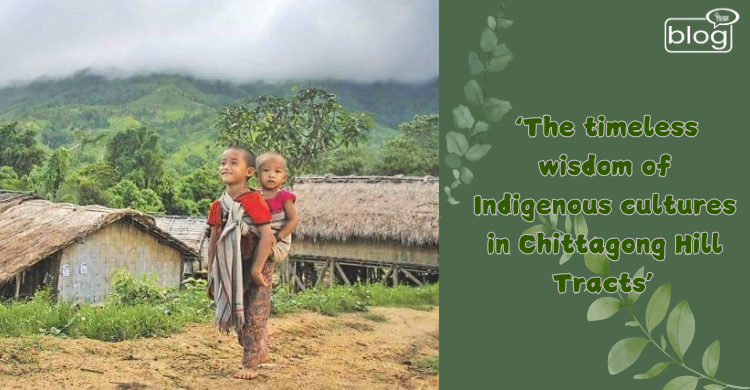The lives of the Indigenous peoples of the Chittagong Hill Tracts (CHT) are therefore closely connected with nature, unity and prosperity, and cultural diversity.
Many of their actions and customs that people can see as quite primitive actually contain a clear understanding of the world that modern society cannot see. However, these ageless practices have inherent problems within the continuously evolving environment around us.
One very unique part of their tradition is their form of a farming practice known as ‘Jum’ cultivation. This method includes making an afforestation on small portions of wooded land and leaving the land to regrow by itself. Apart from being an eco- friendly method of agricultural practice, jum cultivation also showcases their keen money ecology and sustainability of the soils. The concept of farming is so deeply ingrained in the CHT Indigenous people that the act is considered by many a cultural and an ecological practice, coming as it does from the natives’ relationship with the land.
They still consider forests sighted as places that should be preserved. They offer food and medicine together with shelter to the wild animals more so act as a place for refugees. This love for nature is well illustrated by their habits of conserving elements of nature while the modern industrialized world is quickly degenerating into a rape culture. Their friendly attitude to the environment presents a worthy example of the completion’s commitment to sustainability. The devotion of a hill that hits different ways.
The Indigenous peoples of the CHT consider community life to be one of their main components. Many of them are working together right from the villages and a decision is usually arrived at through discussion with the guidance of elderly or community leaders. This system ensures distribution of resources fairly, how best to solve riots and how to establish tame and compact communities. Proposed living in cooperation with others is quite the opposite of the tendencies that are developing in modern societies, namely, individualism.
They relate so much to cultural events and festivals as much as cultural events provide colors and meaning to their existence. The Chakma ‘Biju’ festival’, the Marma ‘Sangrai’ festival, and the Tripura ‘Buisu’ festival are some of the festivals that signify the beginning of new year and spring season through prayers, feasting and purification activities. These events actually help to boost the unity of the community as well as helps them to remember their culture and heritage.
Even their architectural practices that have a very profound tradition of existence are capable of showing harmony with the environment. There are built houses with stilts which are constructed with bamboo and thatch materials to fit the hilly grounds and climate. Some of these structures are serviceable and functional to meet requirements, but are also low-impact to the land they are built on and prove resourceful.
Although the CHT’s Indigenous populations boast a diverse social background, problems persist. Synchronization of their lives with development projects is rarely a concern of today’s evolving projects hence their social fabric is often disrupted. External education systems that are imposed on them negates their languages and histories and this has adverse effects on their cultural identity on the children. Conducted a survey revealed that several challenges persist in the society such as; Health care, safe water, steady job and sustainable education.
Nevertheless, the CHT Indigenous people recommend themselves for progression as they exemplify good relationships with nature, communal living and cultural heritage though sustaining modern difficulties such as climate change and social fragmentation. Their lifestyles reflect harmony, posterity and togetherness all of which the current society lacks and should learn from.
Indigenous peoples of the Chittagong Hill Tracts hold a rich history of them that would be a story of inspiration and knowledge. Their achievements should not only be appreciated and saved for them to be used again in future but for the betterment of those who shall come after us.
I believe that their age of truth and balance is also a beacon of light in a world obsessed with sustainable and inclusive solutions.
To read more blogs like this click here
Writer,
Jemi Sailuk
Intern, Content Writing Department
YSSE

